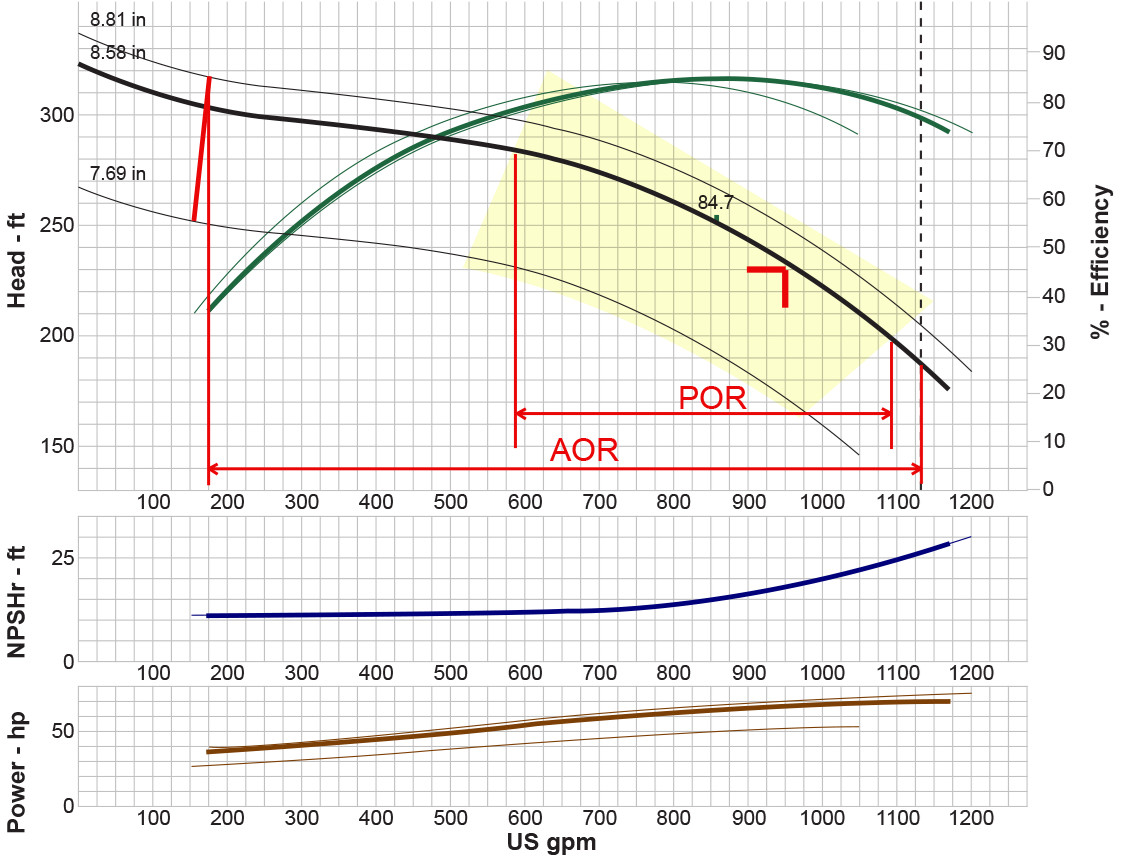Pump Operating Regions-AOR and POR
 Feb 28, 2022|
Feb 28, 2022| View:637
View:637Pump impellers are designed to operate at a specific flow rate where there is a zero incidence angle between the inlet impeller vanes and the approaching liquid at a particular rate of flow, called shockless entry flow. The flow of shockless entry is typically near the pumps best efficiency point (BEP), and BEP is used as a proxy because it is more easily determined by people who did not design the impeller.
Higher or lower rates of flow relative to the BEP cause a mismatch between the angle of the approaching liquid and the impeller vane inlet tips. The greater the incidence angle, the greater the potential for flow separation and cavitation to occur. Design characteristics for both performance and service life are optimized near the BEP, and the pump operates with maximum hydraulic efficiency. Therefore, operating as close to BEP as possible will result in maximum pump reliability.
The Hydraulic Institute defines two important pump regions of operation. The preferred operating region (POR) is the range of rates of flow to on either side of BEP within which the hydraulic efficiency and operational reliability of the pump are not substantially degraded. The allowable operating region (AOR) is a wider range of flow, outside the POR, over which the service life of a pump is acceptable. When pumps are operated outside their POR, the flow through the pump is no longer uniform. This results in areas of flow recirculation and separation that can cause additional loading, flow induced vibration and local areas of cavitation, all of which result in reduced reliability. The AOR is impacted by factors such as hydraulic loads, temperature rise, vibration, noise, power limits, liquid velocity, pump and potential for clogging, NPSH margin, head flow curve shape, suction recirculation, and pump size. The user should consult with the pump manufacturer to determine this value.




